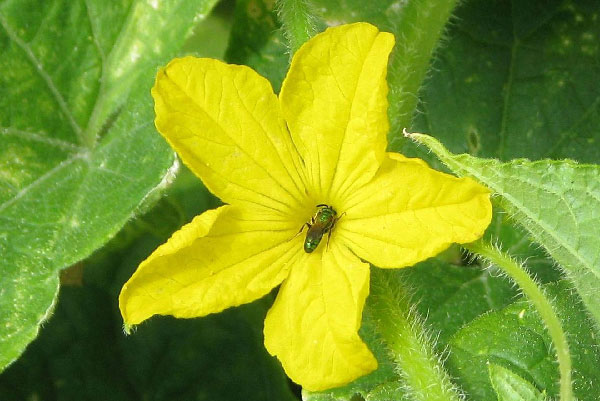It is County fair time. Be sure to attend your county fair and enjoy the 4-H and open class exhibits including vegetables and flowers.
Poor Pollination Creates Weird Vegetable Shapes
While working with vegetables at the county fair, I often receive questions about them. A common question is “what are the causes of poor fruit set or odd-looking and deformed fruits?”
Vegetables do produce fruit. Any part of any plant that carries the seed is the fruit. When we eat cucumbers, squash, melons, green beans, tomatoes, we are eating the fruit of the plant. Other than melons, these are classified as vegetables for eating.
Poor fruit set and deformed fruit are often the result of inadequate pollination. With insect-pollinated crops you can do everything right from fertilizing to irrigating and plants can still fail to produce well because of poor pollination. While adverse temperatures can reduce pollen viability and reduce pollination, a more common cause with vegetables in the cucurbit family is insufficient insect activity for pollination. Vegetables in this family include cucumbers, melons, squash and pumpkins.
Insect Pollinators
For these plants, honeybees and other insect pollinators are required for pollen transfer. This is mainly due to the weight and stickiness of the pollen and the fact cucurbits have separate male and female flowers. These plants are not wind or self-pollinated as is the case with tomatoes, beans, peas, and corn.
Researchers have found that it takes at least nine honeybee visits per flower to adequately pollinate cucumbers. Because many seeds form within each fruit and each pollen grain is responsible for the development of a single seed, inadequate pollination results in small or misshapen fruit and lower yields.
The individual flowers of cucurbits remain open only for a single day. If they are not pollinated during this time, the flowers drop from the vine. When incomplete pollination occurs, fruit do not develop properly and may be deformed or drop off early.
Protect Your Pollinators
It is important to avoid applying insecticides during the time cucurbits are blooming to avoid killing pollinators. If a damaging insect needs to be controlled, the risk of injury to pollinators can be reduced by applying pesticides late in the evening after bees have completed foraging.
If possible, use pesticides with the lowest toxicities to bees. Generally, wettable powders and dusts are more toxic to bees than emulsifiable formulations. Also do not spray when there is heavy dew.
Keep in mind cucurbits have male and female flowers. The male flowers develop first, often 10 to 14 days before female flowers. If a plant is just beginning to bloom and flowers are dropping off these are likely male flowers that only produce pollen but no fruit.
Once cucurbit plants begin to develop female flowers, which have a very tiny fruit at the base of the flower; and if enough pollinators are present to transfer pollen, fruit will soon begin to develop.
Source: Bee Pollination of Cucurbit Crops, NebGuide G1754 available at extensionpubs.unl.edu

